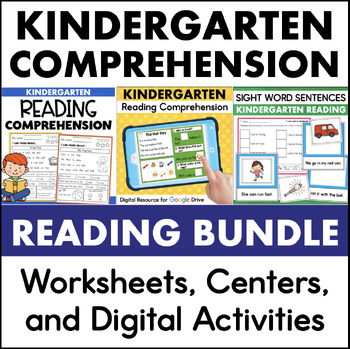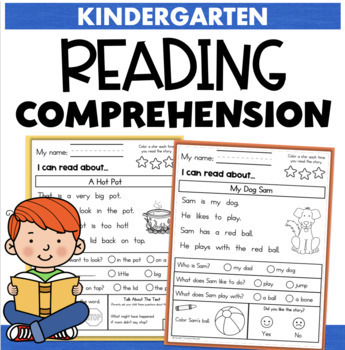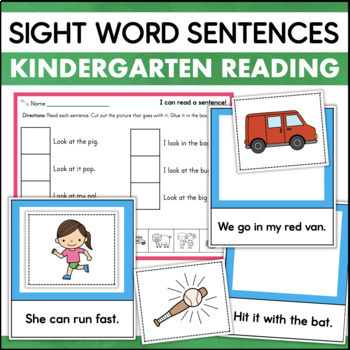Kindergarten Reading Comprehension Decodable Passages CVC Sight Word Sentences
- Zip
- Easel Activity

What educators are saying
Products in this Bundle (3)
Bonus
Description
This bundle contains three resources to help build reading skills and comprehension in kindergarten. Includes reading passages with comprehension questions, digital comprehension activities for Google (companion to the printed reading passages), and sight word sentence-picture match activity.
COMPREHENSION PASSAGES AND QUESTIONS:
15 reading passages with comprehension questions appropriate for kindergarten. They are designed for beginning readers and slowly increase in difficulty as you move through them.
The following features help build reading skills:
- Fluency Practice - Students are encouraged to read the text 3 times with stars to color each time they read.
- Picture Support - Simple illustrations help provide context.
- Text-Based Questions - Students will refer back to the text to answer three questions per story.
- Sight Words - All passages include common kindergarten-level sight words.
- Skill Application - Each passage also includes a skill activity such as coloring a picture to match information provided in the story or writing a sight word found in the story.
- Text Talk - Every passage includes a “Talk About The Text” activity. This is designed to encourage parent involvement with the adult asking the child questions about what they read. These questions involve making inferences or interpreting the text in some way.
DIGITAL COMRPEHENSION ACTIVITIES:
This is a full color version of the reading comprehension passages above. There are moveable pieces that students can drag-and-drop to answer the questions. These activities can be completed by students through Google Classroom, or you can project them for the class to see and work on together.
SIGHT WORD SENTENCES:
This literacy center that helps build fluency and comprehension while practicing reading sight words in context.
Includes:
- 72 sentence cards
- 36 picture cards
- Worksheets
The sentences include common kindergarten sight words and cvc words, while the picture cards provide heavy picture support. Students will read each sentence, find the matching picture, and place it on the card.
The worksheets require students read the sentences and glue the matching picture next to it.
BONUS FILE: Set of 5 kindergarten sight word worksheets - Students color, trace, write, find, and spell build words with these cut-and-glue worksheets.





